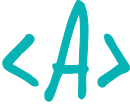I saw this question in a Facebook group recently, and thought you might be wondering it, too…
How do you position yourself as an expert in your market, industry, or niche?
The answer my friend is, content!
Don’t be fooled by the people who are saying that content marketing is dead, yet they’re sharing that via a webinar or social media. Those things are content.
Content allows you to:
- Share what you know
- Speak to your audience’s pain points and desires
- Show your people that you can help them get from point A to point B
- Debunk myths they might be believing
- Show that there are different approaches they might not have thought about before
- Share your story, experience, and background to establish that you’re highly qualified
- Present yourself as a thought leader #GOALS
Now you might be thinking, “Okay, I totally get it, I’m on board. But how the heck do you figure out what to write about?”
I’ve got you, friend.
Here’s a 3-step exercise to figuring out what kind of content to share with your audience:
I encourage you to break out a piece of paper and a pen or a new Google doc and work through these steps.
1) What’s the number one offer you’re trying to sell right now?
Whatever you share should tie into this. At the end of your content or content series, it’ll be natural to invite them into that next step with you, your paid offer.
2) Where is your audience at in their buying journey?
If you’re wondering what the heck a buyer journey is, here’s a quick rundown. I love this description from HubSpot:
“Buyers don’t wake up and decide to buy on a whim. They go through a process to become aware of, consider and evaluate, and decide to purchase a new product or service.” – HubSpot
Different people say different things, but for simplicity, we can break down the buyer journey into 3 stages:
- Awareness:
The buyer is aware they have a problem but aren’t aware of solutions.
“I want and need to get more active on social media to boost my online presence and visibility.
P.S. You’ll be wasting your time trying to convince people who don’t even know they have a problem to purchase your offer.
- Consideration:
The buyer is aware they have a problem and are actively seeking out solutions.
“What options are available to help me do my social media more effectively, but also save me time? Plus, I can’t hire a social media manager right now.” - Decision:
The buyer is aware they have a problem, has considered different solutions, and is choosing one that best meets their needs.
“A content membership would be an awesome way to help me create killer content and start posting consistently online, while helping me save time and money. XYZ is the service for me.”
Make a list of your audience’s buyer stages. They may look different than this example and that’s okay! Then, figure out what stage your audience is likely in RIGHT NOW.
3) Now that you’ve established where your target audience is at in their buyer journey, you can create content that really specifically targets their pain points and desires at that point.
- What are the things they’re dealing with RIGHT NOW that are really frustrating them? And how can you help them solve those problems?
- What are those desires they want so deeply? How can you help them get there?
Now, get out there and start creating and connecting with your audience! I can’t wait to see what you share with the world.







